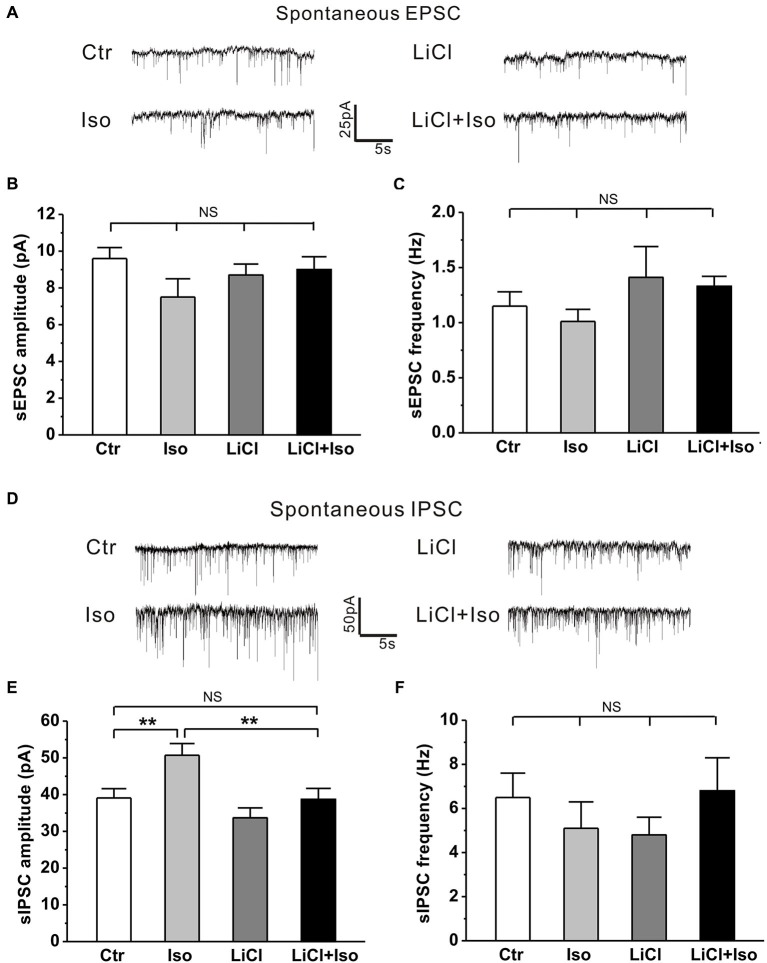Figure 7.
Lithium readjusts the balance between excitatory and inhibitory synaptic activities in neonatal isolation rats. (A–C) Neither neonatal isolation nor lithium has any effect on sEPSC amplitude (B) or frequency (C), and corresponding representative traces are shown in graph (A). For sEPSC amplitude: treatment × drug, F(1, 54) = 1.981, P > 0.05; treatment, F(1, 54) = 2.066, P > 0.05; drug, F(1, 54) = 0.352, P > 0.05. For sEPSC frequency: treatment × drug, F(1, 54) = 0.485, P > 0.05; treatment, F(1, 54) = 1.608, P > 0.05; drug, F(1, 54) = 0.031, P > 0.05. (D–F) Neonatal isolation dramatically enhances sIPSC amplitude (E), but not frequency (F); while lithium recues the abnormal enhancement of sIPSC amplitude, and corresponding representative traces are shown in graph (D). For sIPSC amplitude: treatment × drug, F(1, 47) = 1.253, P > 0.05; treatment, F(1, 47) = 8.143, P < 0.05; drug, F(1, 47) = 8.797, P < 0.05. For sIPSC frequency: treatment × drug, F(1, 47) = 2.210, P > 0.05; treatment, F(1, 47) = 0.057, P > 0.05; drug, F(1, 47) = 0.001, P > 0.05. Data show mean ± SEM (*p < 0.05; **p < 0.01).

